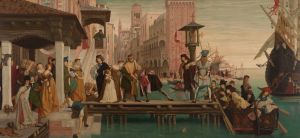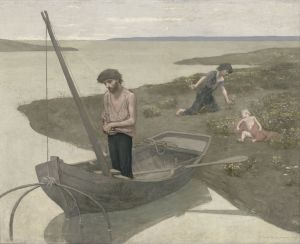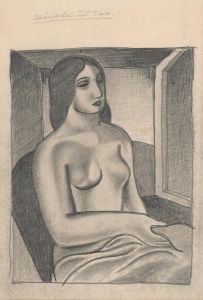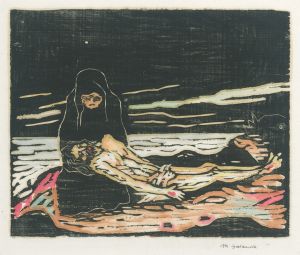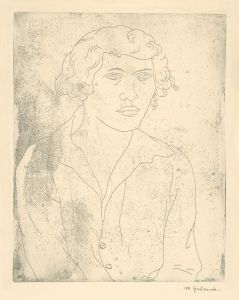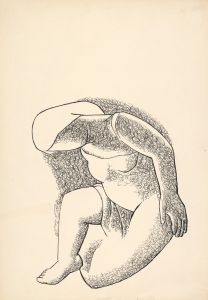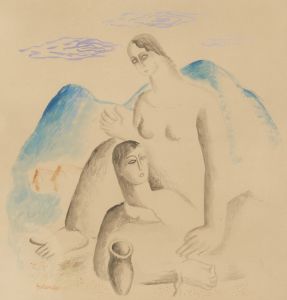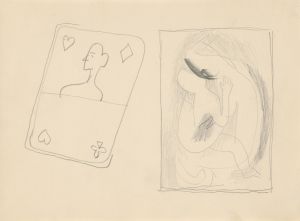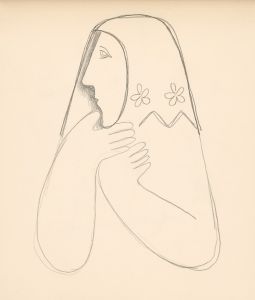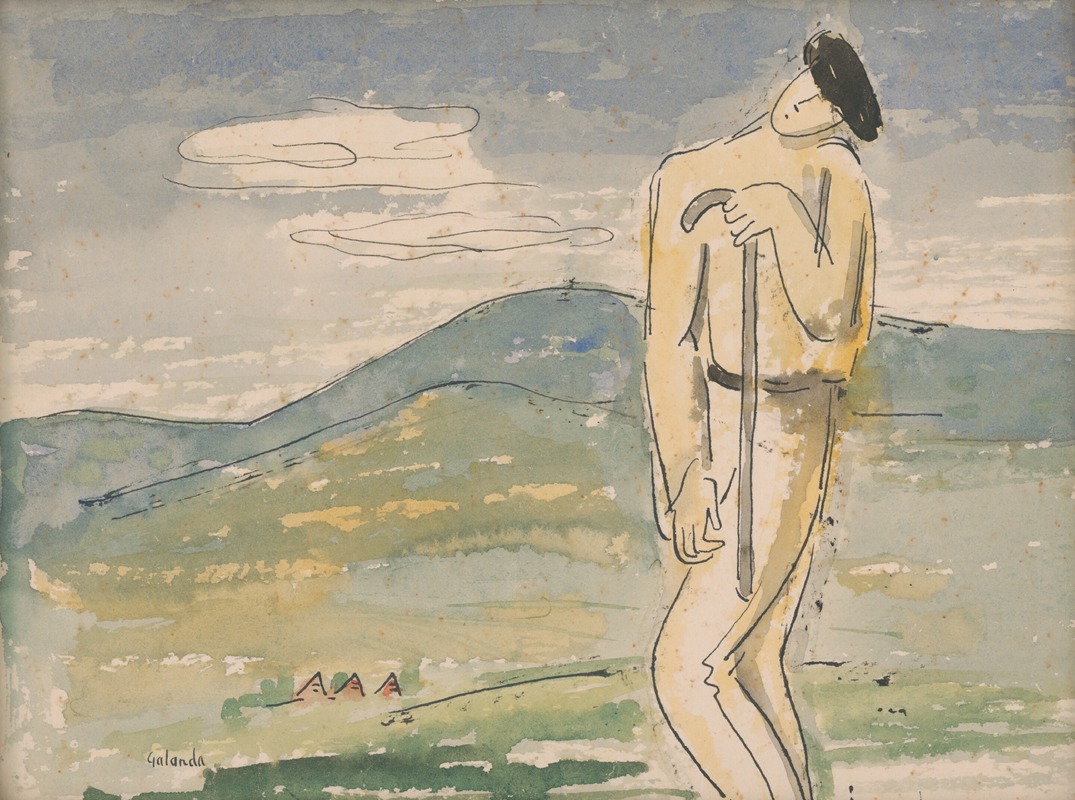
Unavený pútnik
A hand-painted replica of Mikuláš Galanda’s masterpiece Unavený pútnik, meticulously crafted by professional artists to capture the true essence of the original. Each piece is created with museum-quality canvas and rare mineral pigments, carefully painted by experienced artists with delicate brushstrokes and rich, layered colors to perfectly recreate the texture of the original artwork. Unlike machine-printed reproductions, this hand-painted version brings the painting to life, infused with the artist’s emotions and skill in every stroke. Whether for personal collection or home decoration, it instantly elevates the artistic atmosphere of any space.
Mikuláš Galanda was a prominent Slovak painter and graphic artist, known for his significant contributions to modern Slovak art in the early 20th century. One of his notable works is "Unavený pútnik" (The Tired Pilgrim), which exemplifies his unique artistic style and thematic focus.
"Unavený pútnik" is a painting that reflects Galanda's interest in the human condition, particularly themes of fatigue and perseverance. The artwork portrays a weary traveler, capturing a moment of rest and contemplation. Galanda's use of color, form, and composition in this piece is indicative of his broader artistic approach, which often combined elements of modernism with traditional Slovak motifs.
Mikuláš Galanda was born on May 4, 1895, in Turčianske Teplice, then part of the Austro-Hungarian Empire. He studied at the Academy of Fine Arts in Budapest and later at the Academy of Fine Arts in Prague, where he was influenced by contemporary European art movements. Galanda's work is characterized by a synthesis of modernist techniques and a deep connection to Slovak cultural heritage.
Throughout his career, Galanda was associated with the "Generation of 1909," a group of Slovak artists who sought to modernize Slovak art and integrate it into the broader European context. This group was instrumental in the development of Slovak modernism, and Galanda's contributions were pivotal in this regard.
"Unavený pútnik" is a testament to Galanda's skill in capturing the emotional and physical states of his subjects. The painting's composition is carefully balanced, with the figure of the pilgrim occupying a central position. The use of muted colors and soft brushstrokes conveys a sense of tranquility and introspection, inviting viewers to reflect on the pilgrim's journey and their own experiences of fatigue and renewal.
Galanda's work, including "Unavený pútnik," often explored themes of human struggle and resilience. His paintings frequently depicted ordinary people in moments of rest or labor, highlighting the dignity and strength inherent in everyday life. This focus on the human experience, combined with his modernist sensibilities, made Galanda a key figure in Slovak art.
In addition to his painting, Galanda was also an accomplished graphic artist. He produced numerous illustrations, posters, and prints, many of which were published in Slovak cultural and literary magazines. His graphic work further demonstrates his versatility and commitment to advancing Slovak art.
Mikuláš Galanda's legacy is preserved in various Slovak art institutions, including the Slovak National Gallery, which houses many of his works. His influence on subsequent generations of Slovak artists is profound, and his contributions to the development of modern Slovak art continue to be celebrated.
"Unavený pútnik" remains an important piece within Galanda's oeuvre, exemplifying his ability to blend modernist techniques with a deep empathy for the human condition. Through this painting, Galanda invites viewers to pause and consider the universal experiences of weariness and perseverance, making it a timeless and poignant work of art.






